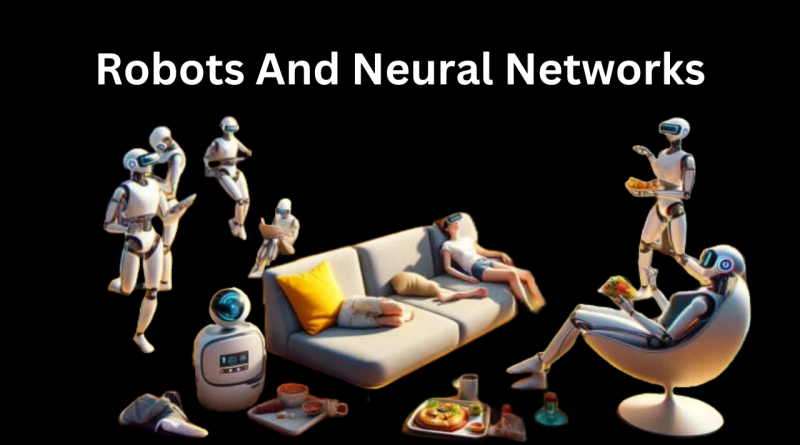Why Do Neural Networks and Robotics Make us Lazy?
Chatbots have rapidly burst into our lives and are gaining more and more space in it, especially when it comes to work. And while modern AI systems should make us more efficient, the results of a new study suggest that this may not actually be the case. As scientists from the Technical University of Berlin have found, working side by side with robots can make people much lazier. Moreover, the continued use of AI bots can lead to unintentional negligence and poor quality of work, opening the door to potential safety issues. The authors of the work, published in the journal Frontiers in Robotics and AI, believe that relying on smart assistants makes us more relaxed, lazy and inattentive. But why? Let’s find out!

Since the release of ChatGPT and other chatbots, millions of people around the world began to fear for their jobs, believing that AI could make them unemployed. Now that generative AI systems have begun to work side by side with us, people have learned to see them as comrades
and even colleagues on the team. Daily interaction with generative assistants is essentially a team effort, which has both negative and positive effects on work performance.
So, when working in a team, we often relax and allow our colleagues to do some of the work for us. This behavior occurs all the time and is called “social loafing.” That’s why scientists from the Technical University of Berlin wanted to find out whether we’re actually messing around when we work with AI systems and robots. According to the lead author of the scientific paper, Dietlind Helen Symek, teamwork is a mixed blessing.
Note that traditionally robots practically do not interact with human colleagues for safety reasons. For example, in the automotive sector, the lifting capacity and speed of large one-armed robots pose a serious threat to humans. However, there is a growing trend to bring humans and robots closer together, both physically and online.
Social inaction
During the work, scientists simulated the task of checking industrial defects: searching for errors on printed circuit boards. The study involved 42 people who were provided with images of printed circuit boards and tasked with identifying errors in them. However, half of the participants were told that the boards they were looking at had already been checked by a robot called Panda. Both groups were then asked to rate their efforts on a survey.

Although both groups spent roughly the same amount of time on the task and rated their effort and performance similarly, the Panda group made more errors and identified fewer defects than the other group. This was despite the fact that both teams said they devoted the same amount of time and attention to the task.
The study authors note that this could be due to the fact that participants working with Panda did less mental work because they knew they could simply rely on the robot to catch any errors. This is the same effect that can occur when you are assigned a group project at work or school – and one person does all the work while everyone else goes about their business because they know it will be taken care of.
Laboratory and reality
This kind of behavior in a laboratory setting is unlikely to cause any problems, but in the real world the situation can be much more serious. Working side by side with robots in places like the manufacturing floor or even in design and development can have dangerous consequences.
On longer shifts, where tasks are routine and the work environment provides little or no performance monitoring and feedback, the loss of motivation tends to be much greater. In manufacturing in general, but especially in safety-related fields where double checking is common, this can have a negative impact on job performance, the study authors said in a statement.

Of course, this work has limitations. First, the sample size is relatively small, with only 42 participants. Secondly, the study was conducted in laboratory conditions, which are very different from real life. The findings, however, suggest that working with AI and robots together could make us dangerously lazy .
Engine of progress
Another interesting experiment was conducted by researchers from Harvard University and the Massachusetts Institute of Technology. During the work, the first group of subjects worked with the help of artificial intelligence, and the other without. The results showed that the first group outperformed the second group in almost all performance indicators. However, the AI team was overly reliant on computer systems.

Moreover, careful analysis of the data revealed something alarming – although the subjects were expected to use artificial intelligence to solve their problems, the AI seemed to do the lion’s share of the work – most subjects simply forwarded questions to the chatbot and received the answers they needed.
So why is over-reliance on AI a recipe for trouble? The answer is simple – it’s simple laziness, carelessness and decreased criticality. As they say, trust but verify. Well, finally, we note that the results of another study showed that working with powerful artificial intelligence increases the likelihood that a person will fall asleep at the wheel and make serious errors when performing calculations.

